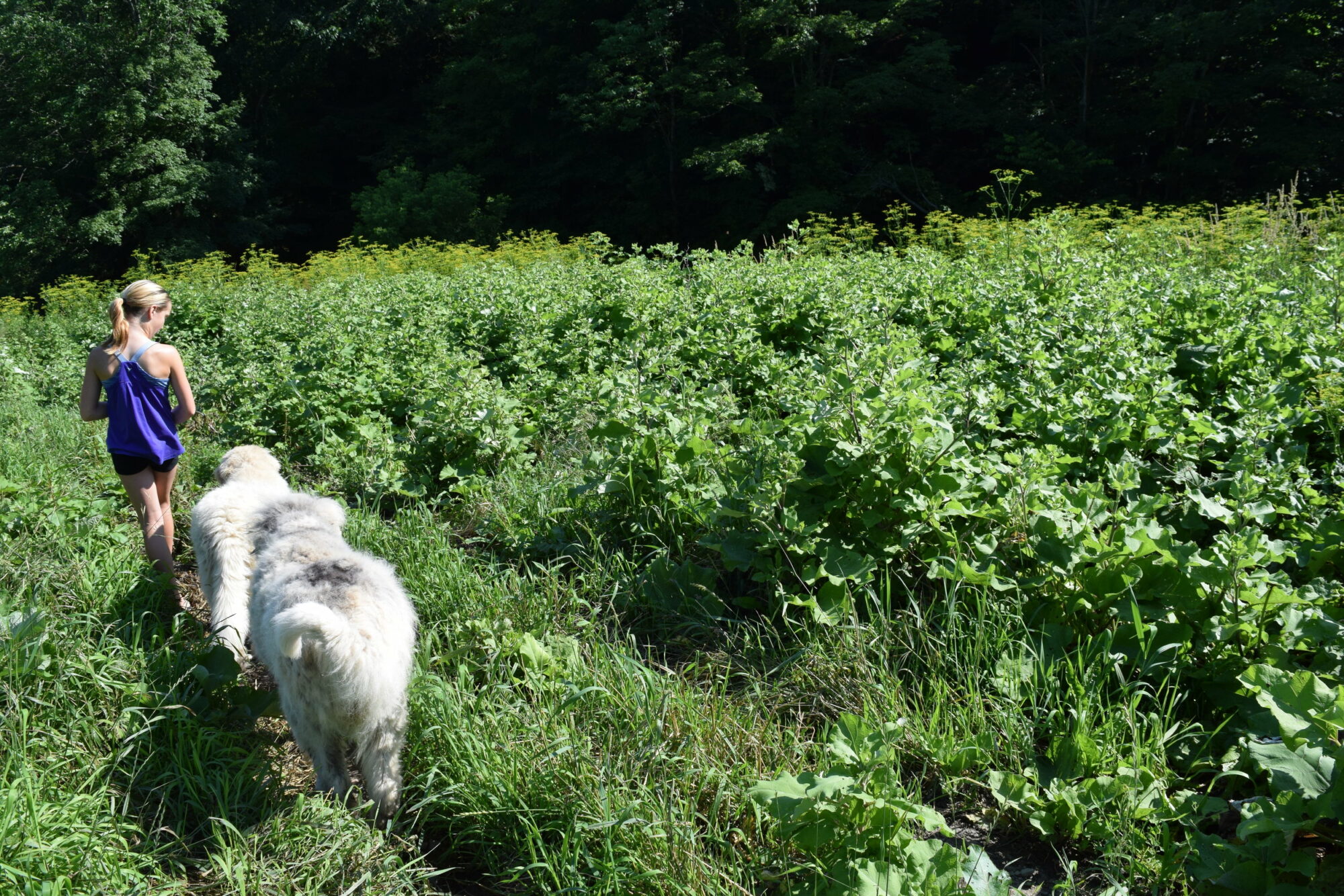I think people generally understand that there are lots of dangers on the farm. And it’s true. From large equipment, to half-buried rusty metal trash, to unpredictable animals, there’s really no end to the ways one can get hurt on a farm. Farm kids are taught at an early age how to give wide berth to moving equipment, to “connect eyes” with the tractor operator to make sure she sees you. Yet, accidents still happen. Farm safety is always my greatest concern, especially when we have visitors!
But I often forget about the toxic plants that surround us on the farm. Some pose considerable danger to humans and animals alike. It’s easy to forget because most of these plants have a specific season when they flourish, and some years are worse than others. They are not a constant danger. These toxic plants are more like an unpleasant relative that comes to visit a few weeks every year, so it’s best to learn how to avoid them altogether!
Poisonous parsnip looks a lot like dill’s wild cousin. Around 5 feet tall, it grows in ditches, along roadsides, and in farm pastures in June and July. Sap from the plant gets on your skin and makes it extremely sensitive to sunlight, giving you a terrible sunburn. One of our daughters is particularly susceptible; her skin will bubble much like a third-degree burn. Cow parsnip and giant hogweed are equally dangerous, causing the same symptoms. Farmers are careful to wear long pants, long sleeves, and other protective clothing when working on fencing, for example, to make sure they do not get burned if they accidently brush up against these plants.
Stinging nettle is found throughout our state, and grows 6-8 feet tall. Their sting can feel very much like a bee sting. The hollow hairs, when touched, will break off and actually inject a tiny dose of chemicals that cause pain, burning or itching. Folks braver than I will make tea from its leaves and claim that it is quite delicious!
Poison ivy, poison oak, and poison sumac are not a particular trouble on our farm, as they all prefer wooded areas and wet soils. That’s not to say I haven’t come into contact with any of them. My husband and I cleaned out a small wooded area behind our previous home, where poison ivy had taken over. We sprayed it with an herbicide and raked it up after had shriveled and died. Guess what? The oils that cause the burning rash were still present. I learned that one the hard way…
There are even more plants that are toxic to animals. Plants like milkweed, pokeweed, even elderberry, are potentially lethal, but goats and sheep tend to pass over them in favor of other things in the pasture. But if it’s a younger or inexperienced animal, or if it is simply a little hungrier than usual, they may take a few bites of these plants. It usually results in an “upset tummy” and the animal is back to its old self within 48 hours…or not. It all depends on how much the animal eats.
Speaking of rate of consumption, even plants like clover or alfalfa can kill a sheep and other ruminants if they gorge on it. This is a particular worry in the spring, as farmers begin to turn their animals out on pasture after a long winter feeding on hay. Gorging on lush pastures (especially those high in legumes like clover and alfalfa), will cause the rapid development of foam in the rumen of the sheep, or “frothy bloat.” Rapidly built-up gases cannot escape, and the ensuing bloated rumen puts so much pressure on the diaphragm that the animal suffocates. Frothy bloat is always fatal, unless drastic measures are quickly taken. In this case, it is not so much the plant that is toxic, but rather the abrupt change in diet that is deadly. Good management, such as filling the animals first with dry hay and gradually increasing their time in lush pastures, is the best approach.
When we first began to build our small goat herd, we researched everything we could about goats. It became clear that we had to establish good management practices and identify problem plants…and decide what to do about them. For example, we removed all black cherry (whose wilted leaves are deadly to goats), but in the case of milkweed, we determined that the risk was small and worth keeping the plants around for Monarch butterflies. It’s definitely worth the time to talk with your county’s cooperative extension office about toxic plants on your land, should you ever decide to get any farm animals.
All of that work, however, did not keep me from accidentally poisoning a donkey and two goats quite a few years ago. We had told our neighbor how much our goats love evergreens—especially Christmas trees. So, when he pulled three gnarled evergreen shrubs from the front of his house and offered them as a treat for our goats, I gladly picked them up. Less than 12 hours later, I found the donkey dead in the pasture and two beautiful goats completely unresponsive. What could have possibly happened? We wracked our brains. And then it hit us…the shrubs! They were Japanese Yews, a highly lethal plant. This was not a plant we had identified on our land as potentially dangerous, nor did I even know what a Japanese Yew was. In hindsight, I was extraordinarily lucky. We could have had 50+ dead animals on our hands that day. The rest of the goats must have known something was up!
